Rotary Drill vs. Hammer Drill: What’s the Difference?
Updated: Mar. 26, 2024
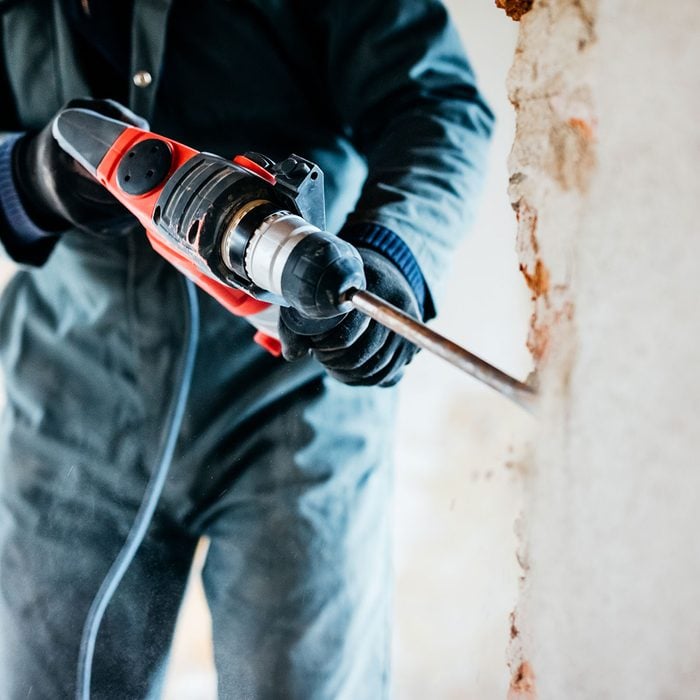
Learn about these drills and don't let a little concrete get in your way
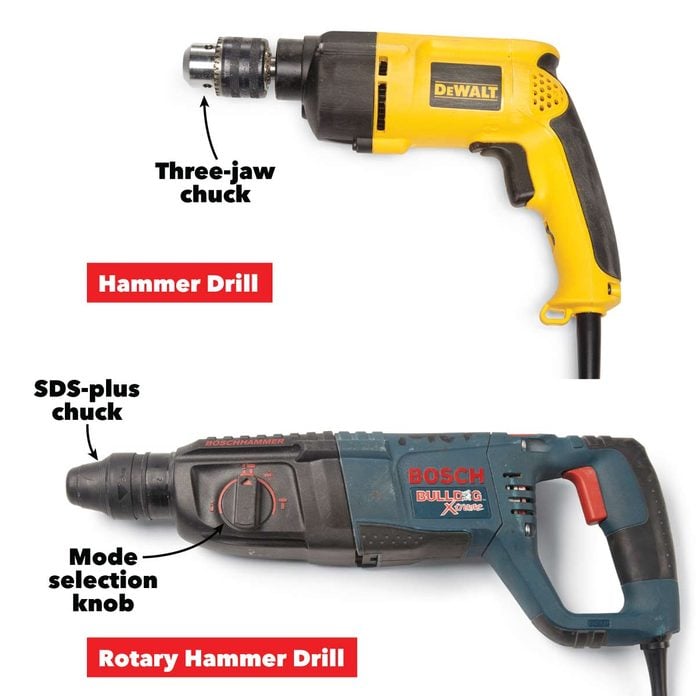
Hammer drills and rotary hammers are both excellent for drilling masonry. Rotary hammers are more powerful, though, and have a “hammer-only” mode with no rotation. They usually have an SDS chuck, which is better for hammering.
Sure, you can drill a hole or two in a concrete block with a regular drill and a masonry bit, but you’ll want to step it up a notch if you have a whole bunch of holes to drill into 50-year-old concrete. In this story, we’ll give you the lowdown on the differences between what is a hammer drill and a rotary hammer, and help you figure out which tool is right for you. We’ll also show you some cool bits and accessories and share some useful tips on how to get the most out of these handy tools.
On This Page
Hammer Drill vs. Rotary Hammer
Hammer drills and rotary hammers (also called rotary hammer drills) both produce a pounding force that makes them extremely efficient at blasting through masonry. As the hammer drill spins, the bit chisels away at the masonry. The mechanical process that delivers this pounding action is what separates the two tools.
Figure A: Inside a Hammer Drill

A hammer drill has two discs that have ridges resembling the ridges on a poker chip (see Figure A). As one hammer drill disc slides past the other, it rises and falls, causing the chuck to slam forward and back. If there is no force on the chuck, the discs are separated by a clutch and the pounding action stops. This saves wear and tear. Many hammer drills can be used as a regular drill by switching off the hammering action.
Figure B: Inside a Rotary Hammer
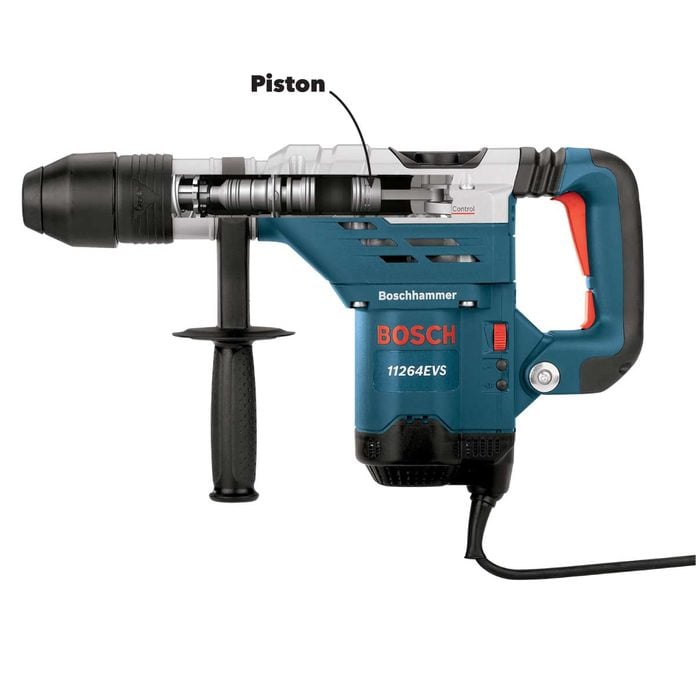
A rotary hammer creates its pounding action with a piston driven by a crankshaft (see Figure B). The piston rides in a cylinder and creates air pressure when driven forward, and it’s the air pressure that actually drives the hammer mechanism. Rotary hammers provide a lot more impact energy than hammer drills. They’re much more durable and are the preferred tool of the pros. Another big advantage is that most rotary hammers have three settings: drill mode, hammer drill or just hammer, so they can act as a mini jackhammer. Of course, a rotary hammer costs more than a hammer drill, but more on that later.
Hammer Drill Bits
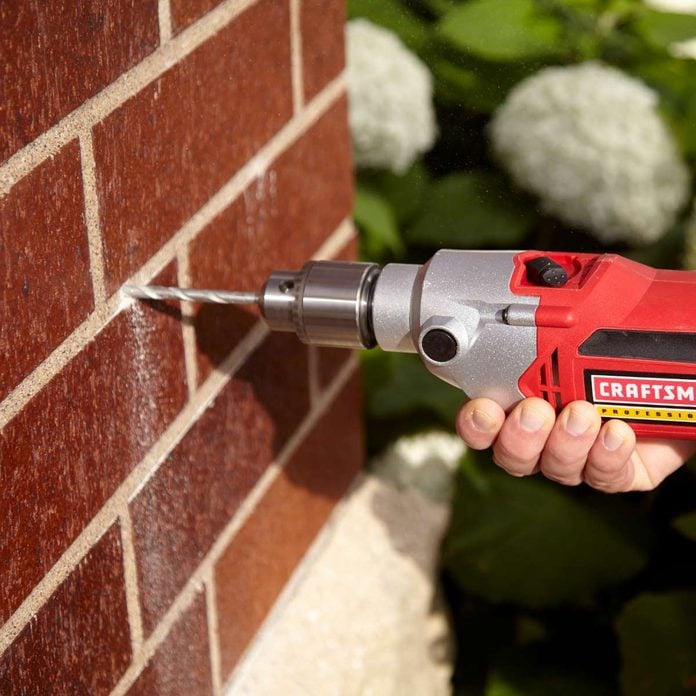
A hammer drill is perfect for light masonry. It works best at drilling holes in bricks, mortar and concrete blocks. But it can also handle the occasional hole in poured concrete.
You don’t need to spend tons of money on hammer drill bits, but more expensive bits are usually equipped with superior carbide tips, and the tips are more securely attached to the shank of the bits, which reduces breakage in heavy use.
Rotary Hammer Bits and Attachments
The most popular type of chuck on the shelves at home centers today is the SDS-Plus. SDS-Plus bits have grooves on the shanks that lock securely into the chuck but allow the bit to move back and forth independently of the chuck. They’re super easy to insert and remove—no tools required. Some of the really big rotary hammers have a similar system, but larger called the SDS-Max. And there are a couple brands that have proprietary systems, so make sure the bit you buy matches the tool you’re using.
When set to hammer mode, rotary hammers can be used for all sorts of jobs, and there are a whole lot of attachments to get those jobs done.
A few of the more popular attachments are shown in the photo:
- Clay spade: Breaks up hard soil.
- Cold chisel: For busting up concrete.
- Tile remover: Works well for pulling up ceramic tiles.
- Bull point chisel: Used to start holes in concrete.
- Scaling chisel: Designed to remove rust, concrete and weld spatter.
If you already own a rotary hammer and are looking for a heavy-duty drill to bore large holes in wood or mix joint compound, consider buying an SDS-Plus chuck adapter (shown in the third photo). This adapter will allow you to use smooth-shank drill bits, hole saws and mixing paddles. Just remember to keep the setting on drill mode or you could destroy the chuck.

Rotary Hammers Are for Larger Jobs
Rotary hammers excel at drilling holes in hardened concrete. A rotary hammer can also be fitted with all sorts of other attachments.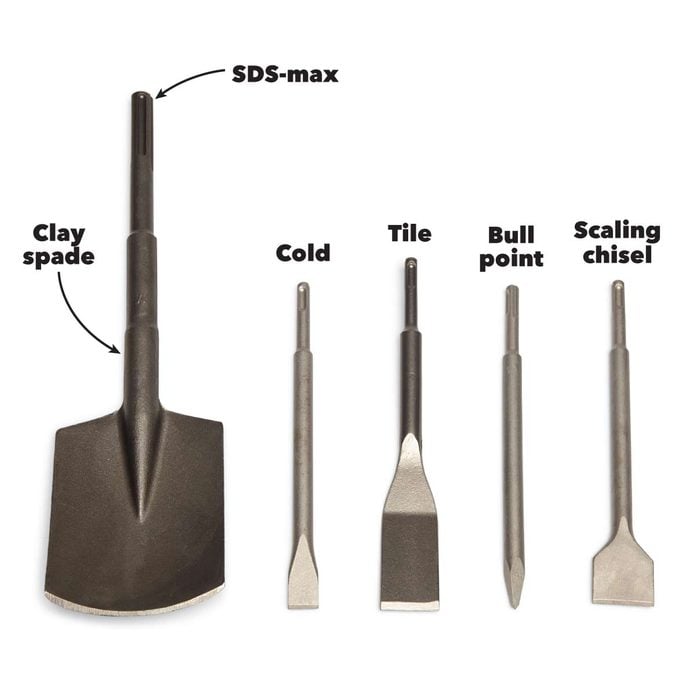
Rotary Hammer Accessories
Rotary hammer accessories include a variety of chisels for scaling metal, breaking concrete, removing the tile and even digging the hard soil. (The one on the left is for an SDS-Max chuck.) You can also add a three-jaw chuck for regular drill bits.
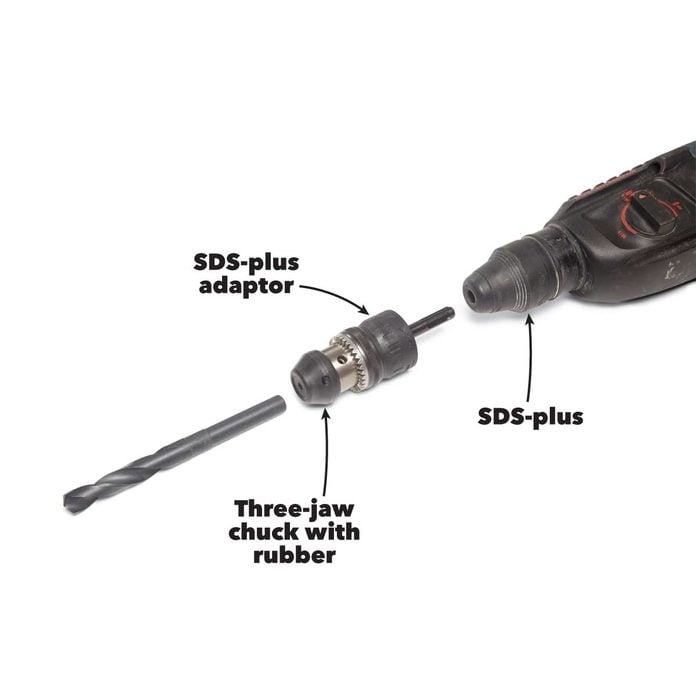
SDS-Plus Chuck Adapter
This adapter will allow you to use smooth-shank drill bits, hole saws and mixing paddles. Just remember to keep the setting on drill mode or you could destroy the chuck.
Learn about 5 more must-have drill accessories here.
Choosing Between a Rebar Bit and Standard Bit
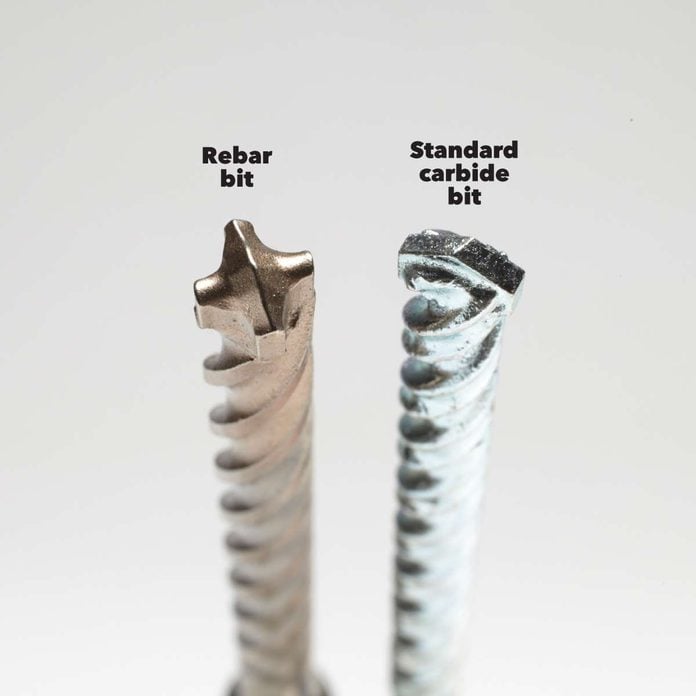
You can spend $50 on a hammer drill that will drill 1/2-in. holes in most masonry, but spending more will get you two things: the ability to drill bigger holes and—more important—faster drilling, which is great when you have lots of holes to drill.
The pounding power of a hammer drill is measured in BPM (beats/blows per minute). But the BPM rating isn’t the whole story: Motor amperage and how the drill feels in your hands are more important. All-metal chucks are more durable than ones with plastic parts. And while keyless chucks are handy on a regular drill, they often don’t have the holding power needed for drilling into masonry. Chuck size often dictates the maximum recommended hole size the drill can handle.
The pounding power of a rotary hammer is measured in pounds of impact energy. When shopping for rotary hammers, more amp power is good, but more impact energy is even more important. Rotary hammers are categorized by the maximum-size hole recommended by the manufacturer, but that doesn’t mean they can’t drill a larger hole once in a while. If you need a drill for nothing but 7/8-in. holes, buy a larger drill that won’t have to work at its maximum capacity all the time.
How Much and What to Expect From Your Drills
$50 to $100 Hammer drills in this price range have motors with 6 to 8 amps. Good for drilling holes up to 1/2 in. in block, mortar, brick and other light masonry. These drills will also bore into concrete, but slowly.
$100 to $150 Hammer drills in this price range feature motors ranging from 7 to 10 amps. Good for drilling holes up to 5/8 in. in light masonry and concrete.
$150 to $225 In this price range, rotary hammers have motors that range from 7 to 10 amps and deliver 1.5 to 3 ft.-lbs. of impact energy. Good for drilling holes in light masonry, and concrete up to 1 in. Can also be used in hammer mode to remove mortar, bust small areas of concrete and chisel tile.
Over $225 Rotary hammers in this price range deliver an impact energy of over 10 ft.-lbs. and can drill 1-3/4-in. holes all day long. They cost $400 to $800, but rent for about $60 per day.
Cordless Drills
If you already own cordless tools, check to see whether the same company makes a hammer drill or rotary hammer that works with the same batteries. Sometimes you can buy a cordless tool without the battery cheaper than you can buy a corded one.
4 Tips for Drilling Into Concrete
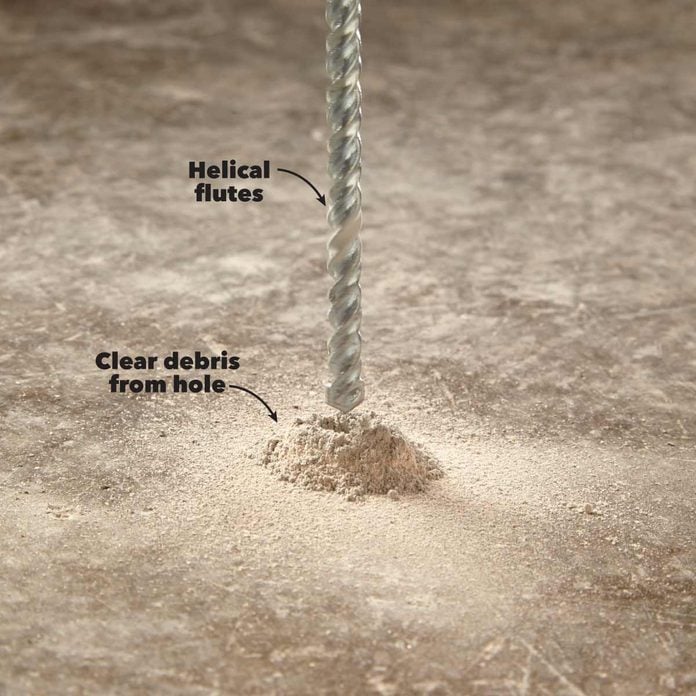
1. Clear the Debris
The flutes on a drill bit are designed to pull up the debris from the hole as you drill, but the best way to clear the hole is to occasionally pull the bit out of the hole as you’re drilling. Less debris in the hole reduces friction, which means smoother drilling, less chance of binding and longer-lasting drill bits.
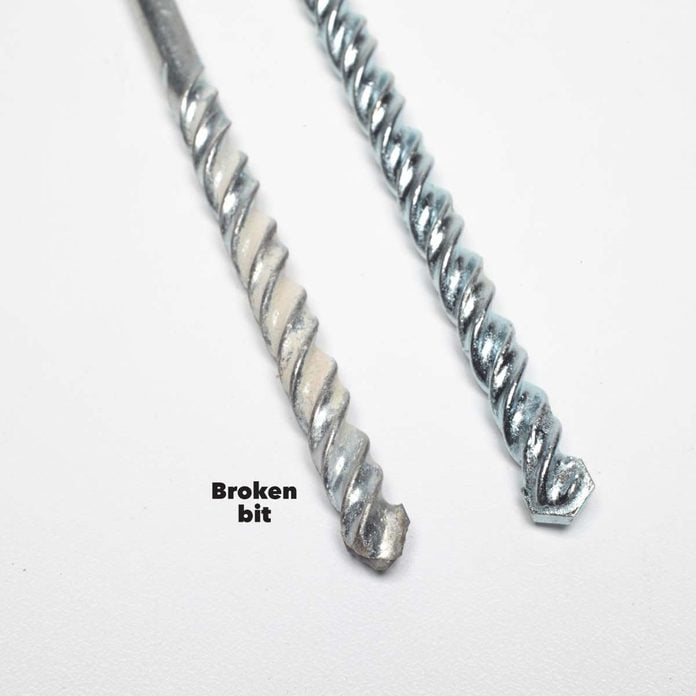
2. Don’t Push Too Hard
There’s a “sweet spot” where the right rpm combined with the right pressure drills fastest. But you won’t find that sweet spot by pushing down as hard as you can. In fact, too much pressure will slow the drilling process and put a whole lot of unnecessary wear and tear on the motor gears. Plus, you’ll break bits.
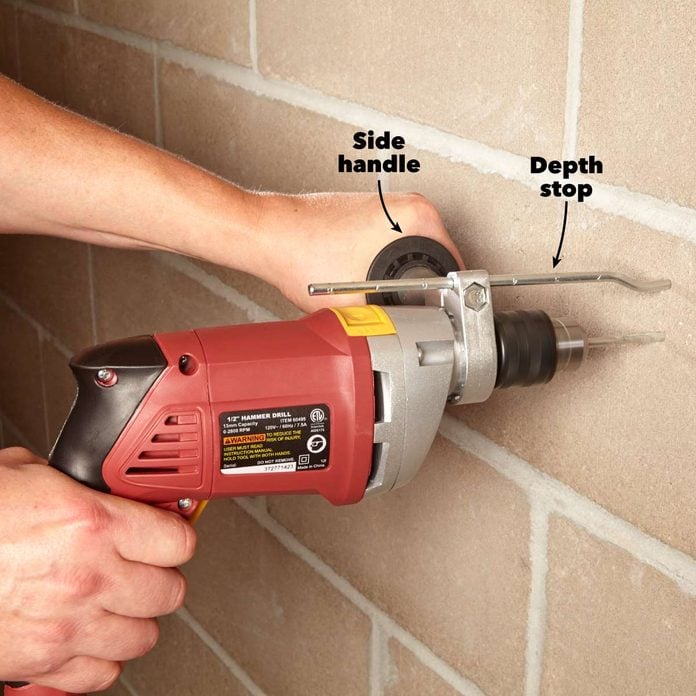
3. Avoid Over Drilling
Most hammer drills and rotary hammers are sold with a side handle and depth stop. Do yourself a favor and use them. There’s no reason to burn up both time and bits by drilling deeper holes than you need to. And you don’t always want to drill all the way through a concrete block to its hollow core—some plastic anchors need a back to stop them or they will get pushed right through the hole.

4. Drill a Smaller Hole First
If you need to drill a couple holes that are larger than the recommended capacity of your drill, start with a smaller hole first. This will significantly reduce the load on the drill. Also, smaller bits don’t skate around as much as larger bits do, which is helpful when you need a hole in a precise spot.
Learn some tips for getting the most out of your drill press here.